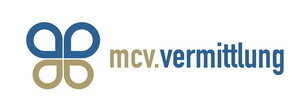Online PREMED Biology Course
Complete Biology Course for Medical and Science Applicants
🧾 What’s Included in the Full Course Package
📖 134 Theory lessons (clear, structured lessons in plain, exam-ready language)
📚 563 Visual Learning Cards (with pictures and text highlighting the major topics)
❓ 1300 Multiple choice questions (end of chapter quizzes, 50 questions per chapter)
🎥 29 Video Reviews with a total of ⏱ 12 hours and 38 minutes- the whole chapter explained lesson by lesson by a tutor- a student from the higher year of medicine.
🧾 Chapter-by-Chapter Overview
Chapter 1: Chemistry of Life
You will learn the basic chemical principles needed to understand life. This includes atoms, molecules, ions, and how they interact to form the building blocks of cells and biological systems.
Chapter 2: Water and Organic Molecules
You will explore the unique properties of water, as well as the structure and biological functions of key organic molecules: carbohydrates, lipids, proteins, and nucleic acids.
Chapter 3: Enzymes
You’ll study how enzymes work as biological catalysts, how they lower activation energy, and how temperature, pH, and inhibitors affect enzyme activity.
Chapter 4: The Cell
You’ll understand prokaryotic vs. eukaryotic cell structure, organelles, and their functions. Learn how cells are organized and how this structure relates to function.
Chapter 5: Cell Membrane
You will learn the fluid mosaic model of membranes, membrane proteins, and how transport processes like diffusion, osmosis, and active transport occur.
Chapter 6: The Cell Cycle and Mitosis
You’ll examine how cells divide, the phases of the cell cycle, and how mitosis ensures genetic continuity. Also includes regulation and checkpoints.
Chapter 7: Meiosis and Sexual Reproduction
You’ll study how meiosis creates genetic diversity, the differences between meiosis and mitosis, and the biological importance of sexual reproduction.
Chapter 8: DNA Structure and Replication
You will understand the double-helix structure of DNA, its role in storing genetic information, and how it is replicated before cell division.
Chapter 9: Protein Synthesis
You’ll learn how DNA is transcribed into RNA and then translated into proteins, covering all the key molecules and stages involved.
Chapter 10: Mutations and Gene Expression
You’ll explore different types of mutations, how they affect gene function, and the mechanisms controlling gene expression in cells.
Chapter 11: Mendelian Genetics
You’ll understand how traits are inherited through dominant and recessive alleles, Punnett squares, and Mendel’s laws.
Chapter 12: Extensions of Mendelian Inheritance
You’ll go beyond simple inheritance and explore codominance, incomplete dominance, multiple alleles, and polygenic traits.
Chapter 13: Chromosomal Inheritance
You’ll study how chromosomes carry genes, sex-linked traits, nondisjunction, and disorders caused by chromosomal abnormalities.
Chapter 14: Evolution and Natural Selection
You’ll learn about Darwin’s theory, the mechanisms of evolution, and how populations change over time due to natural selection and genetic drift.
Chapter 15: Biotechnology and Genetic Engineering
You’ll understand how genes are modified, cloned, and transferred in labs. Includes PCR, CRISPR, and applications in medicine and agriculture.
Chapter 16: Biological Classification and Taxonomy
You’ll study how living organisms are classified, learn about domains and kingdoms, and understand binomial nomenclature and phylogenetic trees.
Chapter 17: Viruses and Prokaryotes
You’ll examine the structure and life cycles of viruses, bacterial classification, reproduction, and their roles in ecosystems and human health.
Chapter 18: Human Digestive System
You’ll learn the anatomy and function of the digestive organs, how nutrients are broken down and absorbed, and the regulation of digestion.
Chapter 19: Human Circulatory System
You’ll study the heart, blood vessels, and the flow of blood. Topics include the cardiac cycle, blood pressure, and components of blood.
Chapter 20: Human Respiratory System
You’ll explore the mechanics of breathing, gas exchange, and how oxygen and carbon dioxide are transported in the body.
Chapter 21: Human Immune System
You’ll learn the components of the immune system, including innate and adaptive immunity, antibodies, vaccines, and immune responses.
Chapter 22: Human Excretory System
You’ll study the structure and function of the kidneys, nephron, and how the body removes metabolic wastes and regulates water balance.
Chapter 23: Human Nervous System
You’ll examine neurons, action potentials, synapses, and the central and peripheral nervous systems, including sensory and motor pathways.
Chapter 24: Human Endocrine System
You’ll learn how hormones regulate body functions, the glands involved, and the interaction between endocrine and nervous systems.
Chapter 25: Human Reproductive System
You’ll study the male and female reproductive anatomy, gametogenesis, hormonal control, and stages of human development.
Chapter 26: Human Skeletal and Muscular Systems
You’ll understand how bones and muscles work together, how joints function, and how the body maintains posture and movement.

